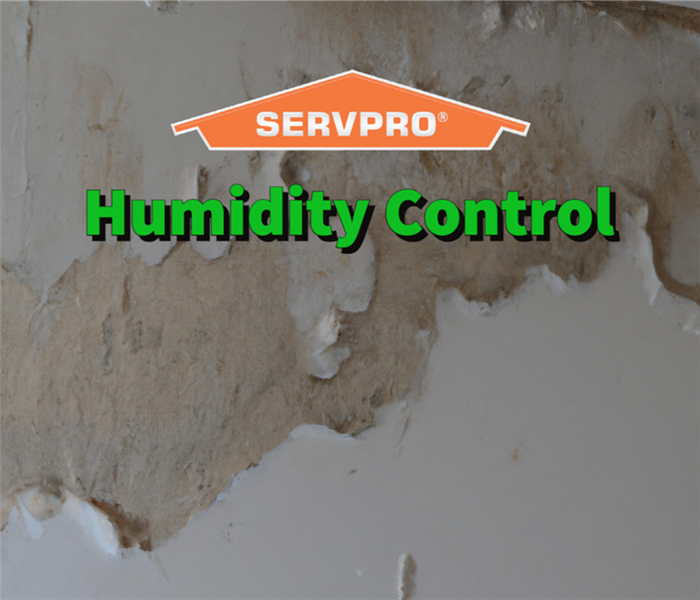Mastering Summer Humidity Control: 5 Expert Tips for Comfort
6/26/2023 (Permalink)
Understanding humidity control will ensure your property avoids unwanted moisture damage this summer.
When the summer season arrives, so does the relentless heat and oppressive humidity. As the temperature rises, so does the moisture in the air, making it challenging to maintain a comfortable indoor environment.
High humidity levels can lead to problems like mold growth, musty odors, and even moisture damage to your belongings. That's why it's crucial to take control of summer humidity and create a serene oasis within your home.
In this blog post, we will explore five essential tips to help you combat summer humidity and keep your living space cool, dry, and enjoyable.
What is humidity control?
Humidity control refers to maintaining optimal moisture levels in the air within your home during the summer months. By managing humidity, you can create a more comfortable indoor environment, prevent moisture-related problems, and improve the overall air quality.
How to test humidity levels?
Testing humidity levels in your property is essential to determine whether they are within the recommended range. Here are a couple of methods you can use to test humidity levels:
- Hygrometer: A hygrometer is the most accurate and convenient way to measure humidity. This device is specifically designed to measure and display relative humidity. There are various types of hygrometers available, including digital and analog options. Place the hygrometer in the area you want to test; it will give you an accurate reading of the humidity levels.
- Dew point calculation: Another method to estimate humidity levels is by calculating the dew point. The dew point is the temperature at which the air becomes saturated, and condensation occurs. You can use an online dew point calculator or a handheld device that measures temperature and humidity to determine the dew point. By comparing the current temperature with the dew point, you can gauge the relative humidity in the air.
By regularly testing the humidity levels in your property, you can identify potential issues and take appropriate measures to control and maintain optimal humidity for a comfortable living environment.
What are the effects of high humidity?
When humidity levels rise, moisture saturates the air, leading to several adverse consequences. Excessive humidity can cause many problems, such as condensation on windows and surfaces, musty odors, and a clammy, uncomfortable atmosphere.
Additionally, high humidity creates an ideal breeding ground for mold, mildew, and dust mites, which can thrive in damp environments. Moreover, prolonged exposure to high humidity can damage furniture, wooden structures, and electronic equipment, leading to warping, corrosion, and malfunction.
5 tips to control humidity this summer
The Environmental Protection Agency (EPA) recommends keeping indoor humidity levels between 30% and 50%. Humidity levels below 30% can lead to dry air and respiratory discomfort, while levels above 50% can promote mold growth and cause damage to furniture and other belongings. Here are some tips to help keep the humidity levels in your property in the desired range:
- Proper ventilation: Proper ventilation is vital for humidity control. Ensure your home has adequate airflow by opening windows and doors whenever possible. Utilize exhaust fans in kitchens and bathrooms to remove excess moisture. Additionally, consider installing attic and whole-house fans to promote air circulation and reduce humidity levels.
- Air conditioning and dehumidification: Air conditioning not only cools the air but also helps to dehumidify it. Set your air conditioner to the "cool" and "dry" modes to remove excess moisture from the air. If your AC unit doesn't have a dehumidification setting, consider using a standalone dehumidifier in high-humidity areas of your home.
- Seal air leaks: Air leaks can increase your home's humidity levels. Check for gaps or cracks in windows, doors, and walls, and seal them properly using weatherstripping or caulk. You can maintain a more comfortable indoor environment by preventing warm, humid air from entering your home.
- Insulate and ventilate attic spaces: Attics can trap heat and humidity, which can seep into your living areas. Proper insulation and ventilation in your attic can help regulate temperature and humidity levels. Install insulation in the attic floor and ensure adequate airflow using vents or fans. Proper ventilation will prevent hot air from affecting the rest of your home and reduce the overall humidity levels.
- Use moisture absorbers: Moisture absorbers, such as desiccants or silica gel packs, can reduce humidity in small spaces. You can place them in closets, cabinets, or other areas prone to excess moisture. These absorbers help to remove moisture from the air, preventing musty odors and minimizing the risk of mold growth.
Final thoughts
Maintaining humidity control during summer is crucial for a comfortable and healthy living environment. By implementing these expert tips, you can keep excessive moisture at bay and enjoy a comfortable, dry home. Remember, SERVPRO is always there to assist you in case of humidity and water damage. With their swift response, expertise, and comprehensive restoration services, SERVPRO ensures that your property is restored efficiently, minimizing disruptions and helping you get back to normal as soon as possible. Choose SERVPRO of South Cobb and experience the utmost professionalism and excellence in water damage restoration.

 24/7 Emergency Service
24/7 Emergency Service
